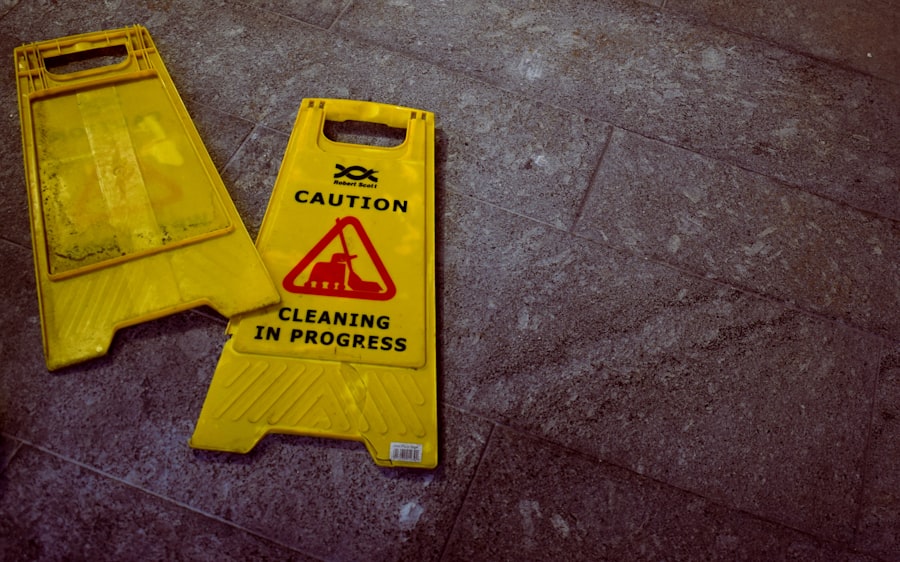Laser hair removal is a popular cosmetic procedure that utilizes concentrated light beams to target and eliminate unwanted hair. The technology behind this treatment is based on the principle of selective photothermolysis, where the laser light is absorbed by the pigment in the hair follicles. This absorption generates heat, which effectively damages the follicles and inhibits future hair growth.
As you consider this option, it’s essential to understand how the process works and what to expect during your sessions.
During your appointment, you will wear protective eyewear to shield your eyes from the laser light.
The practitioner will then apply a cooling gel to your skin to enhance comfort and protect the surrounding tissue. Depending on the area being treated, the duration of each session can vary, but many find that the process is relatively quick and manageable. Understanding these aspects can help you feel more at ease as you embark on your laser hair removal journey.
Key Takeaways
- Laser hair removal uses concentrated light to target and destroy hair follicles, leading to long-term hair reduction.
- Before laser hair removal treatment, it is important to avoid sun exposure and certain hair removal methods to ensure the best results.
- Choosing a qualified provider for laser hair removal is crucial to ensure safety and effectiveness of the treatment.
- Following aftercare instructions, such as avoiding sun exposure and using soothing creams, is essential for optimal results and to minimize potential side effects.
- It is important to manage expectations for laser hair removal, as multiple sessions may be needed for desired results and complete hair removal may not be achievable.
Preparing for Laser Hair Removal Treatment
Preparation is key to ensuring a successful laser hair removal experience. Before your first appointment, you should schedule a consultation with your provider to discuss your goals and any concerns you may have. During this meeting, you will also receive specific instructions on how to prepare for the treatment.
It’s crucial to follow these guidelines closely to maximize the effectiveness of the procedure and minimize any potential side effects. In the weeks leading up to your treatment, you should avoid waxing, plucking, or electrolysis, as these methods can disturb the hair follicles that the laser targets. Instead, shaving the area a day or two before your appointment is recommended, as this allows the laser to focus on the hair beneath the skin’s surface.
Additionally, you should refrain from using any products that may irritate your skin, such as retinoids or exfoliants, as these can increase sensitivity during the procedure. By taking these preparatory steps seriously, you can set yourself up for a smoother experience.
Choosing a Qualified Provider

Selecting a qualified provider for your laser hair removal treatment is one of the most critical decisions you will make. It’s essential to do thorough research to ensure that you are in capable hands. Look for licensed practitioners who specialize in laser treatments and have a solid track record of successful procedures.
Reading reviews and testimonials from previous clients can provide valuable insights into their experiences and satisfaction levels. During your consultation, don’t hesitate to ask questions about the provider’s qualifications, experience, and the specific technology they use. A reputable practitioner will be transparent about their credentials and will take the time to address any concerns you may have.
Additionally, they should conduct a thorough assessment of your skin type and hair color to determine the most effective treatment plan tailored to your needs. By choosing a qualified provider, you can significantly enhance your chances of achieving optimal results.
Following Aftercare Instructions
| Aftercare Instructions | Percentage of Compliance |
|---|---|
| Wound cleaning | 85% |
| Medication adherence | 90% |
| Follow-up appointments | 75% |
| Dietary restrictions | 80% |
Aftercare is an essential component of the laser hair removal process that should not be overlooked. Once your treatment is complete, your provider will give you specific aftercare instructions designed to promote healing and minimize any potential side effects. Following these guidelines diligently can help ensure that you achieve the best possible results from your sessions.
In the days following your treatment, it’s common to experience some redness or swelling in the treated area. Applying a soothing gel or ice pack can help alleviate discomfort and reduce inflammation. Additionally, it’s crucial to keep the area clean and avoid any harsh products that could irritate your skin.
Your provider may recommend avoiding hot showers, saunas, or intense workouts for a short period post-treatment to prevent excessive sweating and irritation. By adhering to these aftercare instructions, you can support your skin’s recovery and enhance the effectiveness of the procedure.
Managing Expectations
As with any cosmetic procedure, managing your expectations is vital when it comes to laser hair removal. While many individuals experience significant hair reduction after just a few sessions, results can vary based on factors such as hair type, skin tone, and hormonal influences. It’s important to have realistic expectations about what laser hair removal can achieve for you.
During your consultation, your provider should discuss what you can realistically expect in terms of results and treatment duration. Most people require multiple sessions spaced several weeks apart to achieve optimal results, as hair grows in cycles and not all hairs are in the same growth phase at any given time. Understanding this process can help you remain patient and committed to completing your treatment plan without becoming discouraged by slow progress.
Avoiding Sun Exposure
Sun exposure can significantly impact the effectiveness of laser hair removal treatments and increase the risk of complications. Before undergoing treatment, it’s crucial to avoid direct sunlight on the areas being treated for at least four weeks prior to your appointment. This precaution helps minimize skin sensitivity and reduces the likelihood of adverse reactions during the procedure.
After your treatment, it’s equally important to continue protecting your skin from sun exposure. Your provider may recommend using a broad-spectrum sunscreen with a high SPF on treated areas for several weeks following each session. This step not only helps prevent pigmentation changes but also supports overall skin health during your recovery period.
By being diligent about sun protection, you can enhance your results and maintain healthy skin throughout your laser hair removal journey.
Being Honest About Medical History
Being open and honest about your medical history is crucial when considering laser hair removal. Your provider needs to know about any pre-existing conditions, medications you are taking, or previous cosmetic procedures you have undergone that could affect your treatment plan.
Certain medical conditions or medications may increase sensitivity or heighten the risk of complications during laser treatments. For example, if you have a history of skin disorders or are taking medications that affect skin sensitivity, it’s essential to disclose this information upfront. Your provider will appreciate your transparency and will be better equipped to make informed decisions regarding your treatment plan, ultimately leading to a safer and more effective experience.
Recognizing Potential Risks and Complications
While laser hair removal is generally considered safe for most individuals, it’s essential to be aware of potential risks and complications associated with the procedure. Common side effects include temporary redness, swelling, or discomfort in the treated area, which usually subsides within a few hours or days. However, more serious complications can occur in rare cases.
Some individuals may experience changes in skin pigmentation, such as darkening or lightening of the skin in treated areas. This risk is particularly relevant for those with darker skin tones or those who do not follow sun protection guidelines post-treatment. Additionally, there is a slight chance of developing blisters or scarring if proper aftercare instructions are not followed diligently.
By understanding these potential risks and discussing them with your provider during your consultation, you can make an informed decision about whether laser hair removal is right for you. In conclusion, embarking on a laser hair removal journey requires careful consideration and preparation. By understanding the procedure, preparing adequately, choosing a qualified provider, following aftercare instructions, managing expectations, avoiding sun exposure, being honest about your medical history, and recognizing potential risks, you can enhance your chances of achieving successful results while ensuring a safe experience overall.
When considering the dos and don’ts for laser hair removal, it is important to consult with a professional to ensure the best results. One helpful resource for information on laser hair removal is In Laser Hair Removal. This website offers valuable insights into the process and what to expect before, during, and after treatment. By following their guidelines and recommendations, individuals can achieve optimal results and avoid any potential risks associated with laser hair removal.
FAQs
What are the dos and don’ts for laser hair removal?
Do: Consult with a professional before starting treatment
It is important to consult with a licensed and experienced professional before starting laser hair removal treatment. They can assess your skin type, hair color, and medical history to determine if you are a good candidate for the procedure.
Don’t: Tan before or after treatment
Avoid tanning, whether from the sun or tanning beds, before and after laser hair removal. Tanned skin can increase the risk of complications and reduce the effectiveness of the treatment.
Do: Shave the treatment area before your session
Shaving the treatment area before your laser hair removal session is recommended. This ensures that the laser energy is focused on the hair follicle rather than the hair above the skin.
Don’t: Wax or pluck hairs before treatment
Avoid waxing or plucking hairs before laser hair removal. The treatment targets the hair follicle, and these methods remove the follicle, making the treatment less effective.
Do: Follow the aftercare instructions provided by your technician
After your laser hair removal session, it is important to follow the aftercare instructions provided by your technician. This may include avoiding sun exposure, using gentle skincare products, and avoiding activities that may irritate the treated area.
Don’t: Expect immediate results
Laser hair removal requires multiple sessions to achieve optimal results. It is important to have realistic expectations and understand that hair reduction will occur gradually over the course of the treatment.





